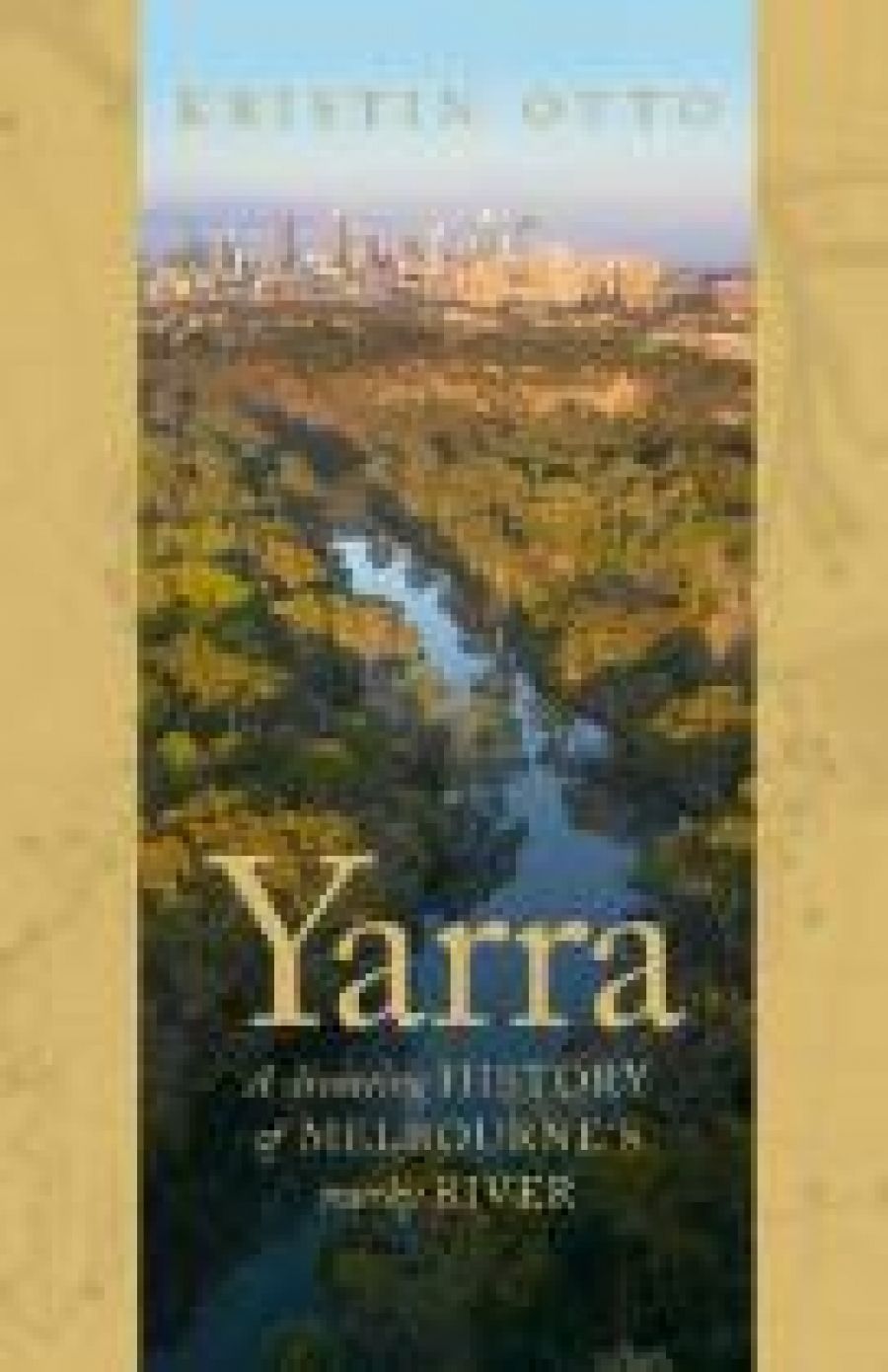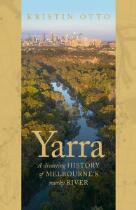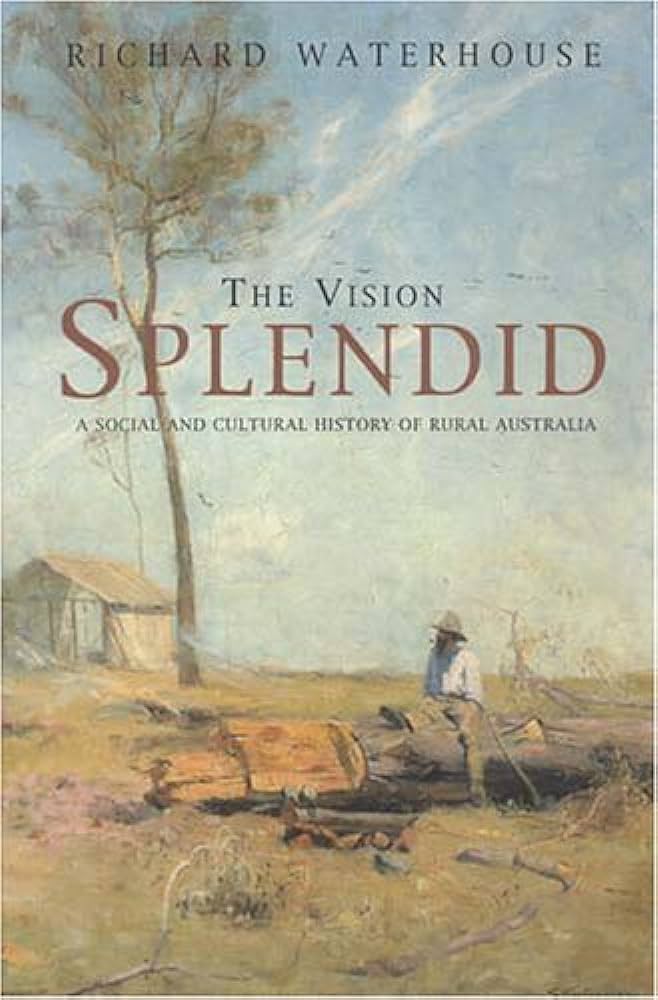
- Free Article: No
- Contents Category: Australian History
- Review Article: Yes
- Article Title: Mythical places
- Online Only: No
- Custom Highlight Text:
I remember Richard Waterhouse as my lecturer in American colonial history at Sydney University in 1978. Then in his late twenties, he stood at the lectern as if itching to break free, arms flailing, feet shifting, constantly pushing his glasses back up the bridge of his nose; every lecture had its moment of vaudeville. After daily suffering the monotone perorations of those who stood entombed in their academic gowns, I enjoyed his lectures, which seemed driven by an infectious curiosity about the past. Perhaps it was also the material that captured the students’ imagination. American history, laced as it was with any number of grand and naïve utopias, could be read as epic and tragic drama, a constant fall from grace.
- Book 1 Title: Yarra
- Book 1 Subtitle: A diverting history of Melbourne’s murky river
- Book 1 Biblio: Text, $32 pb, 244 pp
- Book 1 Cover Small (400 x 600):

- Book 1 Cover (800 x 1200):

- Book 2 Title: The Vision Splendid
- Book 2 Subtitle: A social and cultural history of rural Australia
- Book 2 Biblio: Curtin University Books, $35 pb, 320 pp
- Book 2 Cover Small (400 x 600):

- Book 2 Cover (800 x 1200):

Waterhouse, part of the fifth generation of his family to have grown up in the bush, adopts what he calls ‘a catholic and elastic attitude’ to the concept of rural Australia. He understands ‘rural’ as essentially non-urban, including the bush and all rural towns outside the major capitals. Excluding political history, which he claims is well covered elsewhere, he focuses primarily on the history of rural Australia prior to 1914, by which time, he argues, its core values (anti-authoritarianism, entrepreneurship, a reluctant self-sufficiency) and its key institutions were already long established.
At a time when most histories of place in Australia are turning their gaze to the local or regional, The Vision Splendid, with its national scope and broad sweep, goes against the grain. On the page, Waterhouse is a far more sober historian than the young lecturer I remember. His prose is deceptive, at first appearing merely functional but at closer inspection building, layer upon layer, to reveal an insightful and original history that will no doubt become a standard reference work for readers both within and outside of Australia.
In 1958 Russel Ward argued that the toughness and collectivist mentality of Australian bush workers had been passed down from the convicts. Twenty years later, Graeme Davison claimed that many ‘bush’ values had actually been imposed by an alienated urban intelligentsia writing in The Bulletin during the late nineteenth century. Waterhouse, keen to restore the agency of rural people, distances his approach from that of both Ward and Davison. In the interactions between men and women of European, Aboriginal and Chinese descent, he discovers a rural Australia – in work, religion, sport, theatre and leisure of all kinds – creating its own values and diverse culture. He is at his best when he writes on popular culture, whether it is bare-knuckle fights, cricket or the local melodrama of bush theatre.
Covering such a vast historical terrain can sometimes make it difficult to avoid lapsing into survey mode. Thanks largely to the breadth of his research, Waterhouse steers clear of this trap, collecting many revealing anecdotes that manage to keep the narrative in touch with everyday experience. For many squatters, a library was a marker of status and civilisation, and for many in the bush, newspaper and magazine subscriptions arrived like rain after drought. The written word was one of the most powerful antidotes against the isolation and loneliness of rural life, while the few books that did exist in bush huts were continuously read and reread. In the early twentieth-century, the groom at the coach-change at Rufus Creek in NSW cut out the columns from The Bulletin and The Worker that most appealed to him, pasted them on the wall, and learnt them by heart. In the early twentieth century, as cinema arrived, The Bulletin reported that many rural Australians who watched films containing ‘ocean views’ enjoyed them because they had never seen the sea.
Waterhouse does not romanticise rural life. ‘The Bush,’ he writes, ‘was never united by a set of common values, a sense of shared purpose.’ Despite the selection and closer settlement acts, prospects for upward mobility were already declining by the mid-nineteenth century. The sense of alienation felt by rural workers was only exacerbated by the brutal suppression of strikes in the 1890s, and many rural workers, convinced they were barred from their fair share of land and capital, led ‘nomadic lives that represented dead ends, not freedom’. Mateship and other values associated with the bush ethos, says Waterhouse, ‘constituted a culture of consolation rather than one of celebration’.
‘At the beginning of the twentieth century, almost half Australia’s population lived in towns of less than 3000 people.’ Today, the figure is less than eighteen per cent. The long history of rural–urban drift, now accelerating, makes it tempting to trumpet the decline of the bush. But, as this fine history reveals, rural Australia is also a mythical place and, together with the annual incantation to ‘the spirit of Anzac’, remains the most powerful source of popular narratives of hardship, struggle and loss in our public culture.
Kristin Otto’s ‘diverting history’ of the Yarra River could not be more different from Waterhouse’s approach. In many ways, the two books represent different poles of historical writing. One, scholarly, dense, extensively footnoted and researched, the other wearing its scholarship lightly, bent on providing ‘entertaining history’. While I certainly found Otto’s history entertaining – and her book is well researched – I would have liked more conceptual discussion by way of introduction. Why a history of the Yarra? What led Otto to write it? What did she want to achieve in the writing? How might her approach differ, for example, from other histories such as George Seddon’s on the Snowy or Paul Sinclair’s on the Murray?
As Otto explains, her history consciously ‘meanders in the telling’, closely resembling the many shifts in direction taken by the Yarra’s 3000 kilometres of tributaries. In seeking to map the totality of the river’s history – geology, Aboriginal association, first European encounters, bridges, billabongs, floods, pollution, siltation, working the river, not working the river, sport and recreation, artistic representation, golf courses, architecture, murder, crime and environmental salvation – Otto sometimes provides more of a well-oiled historical inventory than a well-synthesised history.
That said, Otto does write well, and for all Melburnians curious about the history of the Yarra and their city (and the book is clearly targeted at this market), Yarra is to be recommended. It does much more than ‘entertain’. It adds substantially to our knowledge and understanding of the river and its city.


Comments powered by CComment